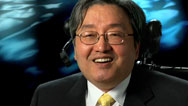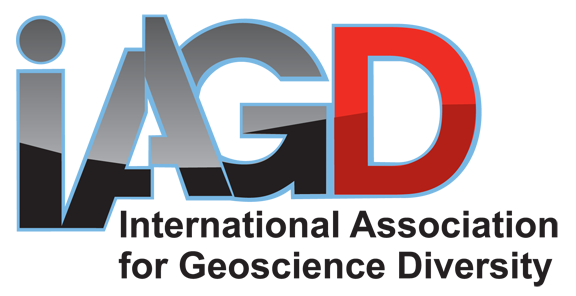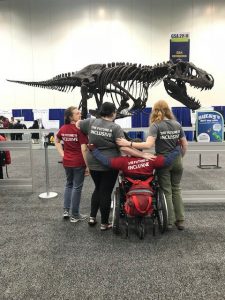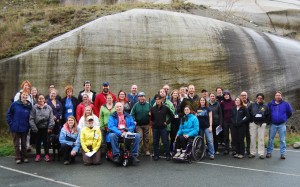Scientist Shares with NSF Staff his Journey Before and After Becoming Paralyzed
Using technology to empower and encourage young people
with disabilities into the STEM disciplines

Sang-Mook Lee
Arlington, VA – While speaking to NSF employees on December 12, 2011, Dr. Sang-Mook Lee, a professor at Seoul National University’s (SNU) Marine Geophysics and Geodynamics Lab, spoke of the automobile accident that took place five years ago when he was driving students to California’s Death Valley. He showed a picture of the over-turned van where he laid trapped for nearly 40 minutes, and he spoke of his complete paralysis from the neck down to having only 1/3 use of his lung capacity.
Employees sat captivated by Dr. Lee’s hour long presentation, in which he controlled his PowerPoint presentation with a sip-and-puff mouse. Most will remember the passion in which he spoke of his love for science, his desire to help others, and his finding an avenue through science in which he could still contribute to society after his accident. During his presentation, Dr. Lee spoke of his journey after the accident, which involved three months in a U.S. hospital, his return to SNU six months afterwards, being recognized by the media for his accomplishments as a disabled person, writing a newspaper column, and finally being tapped to run the Quality of Life Technology (QoLT) program, via a $10 million dollar grant.
According to Dr. Lee, the QoLT program has two primary components: (1) Research and Development, which includes accessible vehicles and other technology that enhance the lives of individuals with disabilities, to (2) Infrastructure and Human Development, which focuses on providing role models for individuals with disabilities, higher education in STEM, and rehabilitation science and engineering.
Dr. Lee further discussed the three stages or components of rehabilitation, which include (1) Medical, or your medical status as a person with a disability; (2) Societal, with includes education, jobs, and inclusion; and (3) Spiritual, in which he pointed to being appreciative and grateful for what you have.
In closing, Dr. Lee left NSF staff with the following Korean proverb: “If you want to go quickly, go alone, but if you want to go far distance, go together.”
A copy of Dr. Mook Lee’s presentation can be obtained in the IAGD Resources link
Credit: NSF, Contact: Ms. Claudia Postell













